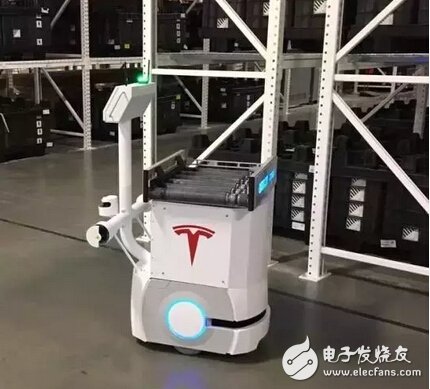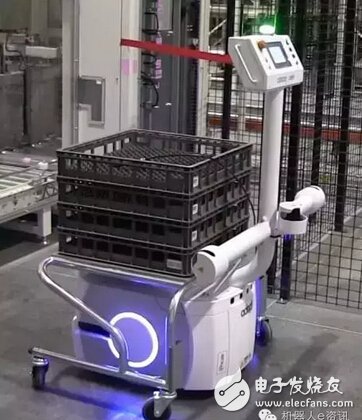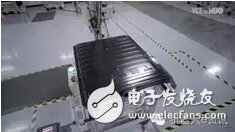Tesla's "Gigafactory" may be the most appropriate name for Elon Musk's ambition. When the factory is built, it will be the largest factory building in the world. And if the plan goes smoothly, it will eventually produce enough batteries to supply 150 GWh of electricity per year, which will meet the needs of 1.5 million Model 3. Tesla hopes to achieve an annual battery production of 35 GWh by 2018, equivalent to 500,000 Model 3 battery requirements. Last week Tesla finally announced the Gigafactory to the media and Tesla buyers, let us have the opportunity to visit the factory to visit some very cool things, it will become the most advanced factory in the world, but work there. The robot is much cooler. The robots that assist employees in the factory are divided into different categories. Some employees say they see these robots as colleagues. Tesla has already deployed human-computer collaboration at the Fremont factory, and they named the robots X-men. Let's take a quick look at the robots in Gigafactory. Although Tesla plans to recruit 10,000 employees for the plant at one time, the company has joined some automated machines. The company hired Eric Christensen to manage the industrial engineering of the plant. Christensen has 20 years of experience in automated manufacturing, mostly working for chip maker AMD, and interestingly, Elon Musk often likes Gigafactory to a CPU. Christensen is responsible for the layout and material flow of the entire equipment, and some robots will be involved in these tasks. Unlike most other robots in the factory, those AIVs don't need to be caged, nor do they need to follow the magnets or navigational markers on the floor. By using digital maps, they can cruise freely in the factory and use them. Sensors detect the surrounding environment and safely avoid people and obstacles. They are mainly used to transport materials from different workstations. They are also customizable. During last week's visit, they would welcome guests visiting the factory and said, "Welcome to Tesla." This particular model is called Adept Lynx. With a power management and self-planning charging program, it can work continuously for up to 19 hours with a payload of 60 kg. Many of the robots in this factory are known as "automatic guided vehicles" (AGV). Those machines use the magnets on the ground or navigation markers to navigate the production floor. You can see them moving the battery block and Powerwall in the Gigafactory: Tesla also has some heavy-duty versions of automated guided vehicles in this factory. The car moved four times and placed the theme song of Indiana Jones: The last robot is a heavy-duty robotic arm, and Tesla has been widely used in the Fremont plant. Although Tesla's robots used in the Fremont factory are mainly Kuka, the Gigafactory seems to be equipped with a Fanuc machine. There is a working M-900iB here. These series of robots can handle payloads weighing up to 700 kg, but this one is special and can only load 360 kg: Other similar robots are assembling battery trays:
BLPS laser safety protective device is designed for personal safety used on hydraulic bender.
Press Brake Protection,Laser Guarding Device,Press Brake Guarding Systems,Press Brake Guarding Jining KeLi Photoelectronic Industrial Co.,Ltd , https://www.sdkelien.com
These are self-navigation indoor self-driving cars (AIV): 




The dynamic test technology it used has passed the Type 4 functional safety assessment by TUV, and get the national invention patent. The product reaches the advanced technological level of similar products.
BLPS laser safety device provides protection zone near the die tip of the bender to protect fingers and arms of the operator in close to the upper mold die tip. It is the most effective solution so far to preserves the safety and productivity of the bender.